What Is Overfeeding and How to Fix It
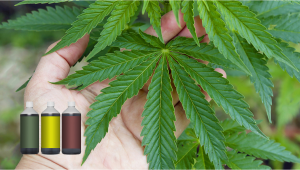
- 1. What is overfeeding?
- 1. a. Autos and overfeeding
- 2. Nutrient burn causes
- 2. a. Drying out the soil too much
- 2. b. Overusing bloom-boosters
- 2. c. Mixing nutrients too strong
- 3. Signs of overfed plants
- 3. a. Nutrient burn during the vegetative stage
- 3. b. Nutrient burn during flowering
- 3. c. Nutrient burn vs nutrient deficiency
- 4. How to fix nutrient burn
- 5. How to prevent overfeeding
- 6. Overfeeding cannabis crops - faqs
- 7. In conclusion
Nutrient burn is the result of overfeeding cannabis seeds and it’s a super common mistake among new growers. Unlike humans, plants do not get fatter and bigger with more “food”. If you give nutrients in excess, your plants will start to show signs of stress.
1. What is overfeeding?
Nutrient burn is the result of overfeeding. When feeding in excess, your plants will start to show signs of stress like the tip of the leaves yellowing and ultimately, browning and dying of the leaves. To avoid this it's essential you follow the schedule the manufacturer provides and adjust accordingly.
A TDS meter measures the amount of nutrients in a solution (PPM), this is the only way to know exactly how much nutrients you're giving your plants and is the best way to avoid nutrient burn.
| Stages of growth | PPM (Particles per million) |
|---|---|
| Seedlings | 100 - 250 |
| First half of vegging | 300 - 400 |
| Second half of vegging | 450 - 700 |
| First half of flowering | 750 - 950 |
| Second half of flowering | 1000 - 1600 |
| End of flowering and harvest | 0 |
Nutrient burn is the result of overfeeding and is something that all growers have dealt with because some plants need more nutrients than others, nutrient burn or deficiency can happen to more experienced growers but it’s more common with new growers.
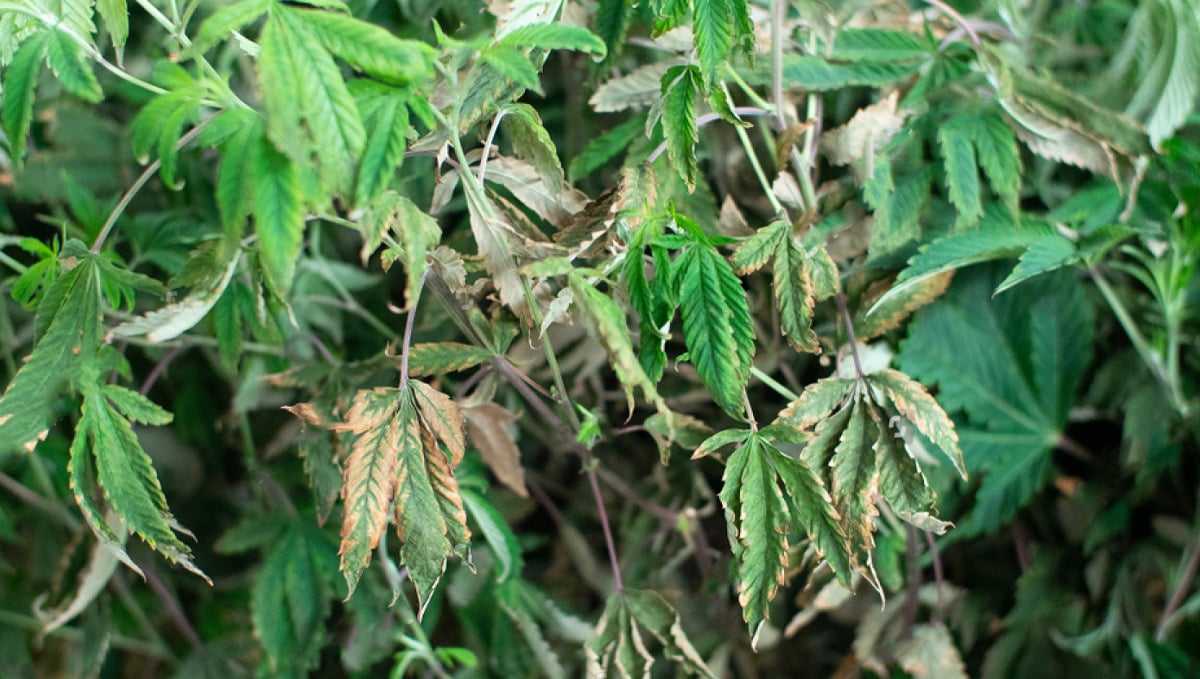
Just like humans, plants start “eating” a small amount of nutrients and will start to need more as they grow, that’s why manufacturers usually provide a feeding schedule, even though the dosage they recommend can vary from strain to strain and on the medium you’re growing in, it’s a good guideline.
So if you're wondering what to feed marijuana? You should have in mind that all cannabis feeding provides the same nutrients which are Nitrogen, Phosphorus, and Potassium, although the amounts may vary according to the medium, environment and specific strain so make sure you look at the signs your plants give you when feeding weed. If you want to provide an optimal amount of nutrients you can use a TDS meter, measuring the PPM (particle per million) will guarantee a healthy plant.
Autos and Overfeeding
Autoflowering cannabis strains work a little differently from regular photoperiod plants. They come with a range of marked and obvious advantages, one of which is that they require a lower amount of nutrients throughout their entire life cycle. Now, it goes without saying that the nutrient levels required are different from strain to strain. Even within a strain group, there are different phenotypes which can result in plants that react very differently, even if you are growing a group of seeds from the same packet.
One thing to keep in mind whenever working with autos is that thanks to a genetic timer that will automatically switch growth from veg to flower after about a month, they have less time to bounce back from any issues. Overfeeding can lead to stunted growth. This sort of setback is not the biggest deal when growing photoperiod strains, as you can simply extend the veg time to compensate for the week or so of stunted growth.
The same cant is done with autos, which means you really need to be careful throughout the entire lifecycle. We always suggest starting your seedlings with pure water for the first 2 weeks, or at least until the first set of true leaves has appeared. A common mistake that we see from novice growers over and over again is a tendency to think that more nutrients = better growth. Actually, it is the opposite that is true. Let’s think about it for a second.
Nutrient companies are businesses, yeah? And how do businesses like these make money? By selling their product. And what’s the one sure-fire way to increase sales? By lying about the nutritional requirements of the plants, and suggesting that cultivators use a little more of the product than is actually needed. This guarantees that customers go through the bottles of nutrients faster than they would otherwise, which forces increased sales.
And with autos’ lower nutritional requirements, growers need to be wary of these instructions. We always suggest going with just one-eighth of the recommended dose, to begin with, and see how the crop reacts. If they still look hungry after a couple of feeds, you can increase the dose to one-quarter of the recommended dose. For the vast majority of strains, you should never need to go over the half dosage mark. Remember, an EC or TDS tester is your best friend when it comes to mixing up a nutrient solution. The numbers on the bottle are too vague to really get a detailed enough idea of what you are feeding your plants. Every single nutrient solution should be tested for ECV levels, plus the pH. The pH of the feed can greatly affect the feeding outcome and needs to be correct so the plant has access to the nutrients in the solution.
We also usually suggest that novice growers use coco-coir as their main growing medium. Why? Well, for a few reasons actually. First up, coco-coir is very easy to flush. Flushing is the best way to quickly manage any overfeeding issue, as it essentially washes out any remaining nutrients in the substrate. Coco-coir also offers much higher rates of oxygenation at the root zone, even when the substrate is totally saturated. This helps combat any root rot issues that may arise.
Remember to:
- Feed pure water for the first few weeks
- Mix a very diluted nutrient solution, to begin with
- Always test for EC or TDS and check the pH
- Be careful with your autos. They have lower nutrient requirements than photoperiod strains and don’t have time to bounce back from stunted growth.
As your cultivation experience grows, so will you nack for inherently knowing what’s happening with your crop. Cannabis cultivation is just like any other discipline, practice makes perfect.
2. Nutrient burn causes
As the name says, the cause of overfeeding is the excess of nutrients and this can happen in a lot of ways:
Drying out the soil too much
When the soil is drying out your plant will have less water while the nutrients remain the same, this will cause a sudden increase in the nutrient to water ratio and can affect your plants.
Overusing bloom-boosters
Bloom-boosters aren’t anything else than Potassium (P) and Phosphorus (K), even though they can help you get a better harvest, using too much will cause nute burn.
Mixing nutrients too strong
A too-strong nutrient solution can affect plants in all stages of growth but younger plants with less developed roots can have a hard time recovering from nute burn.
Overfeeding can happen with organic and synthetic nutrients but because organic feeding makes the nutrients available in the medium and synthetic nutrients feed the roots directly, it’s more common with bottled nutrients.
3. Signs of overfed plants
When the roots absorb more cannabis nutrients than the plant can use, the excess will inhibit water from being transferred throughout the plant and this is when you’ll start to see some signs of overfeeding.
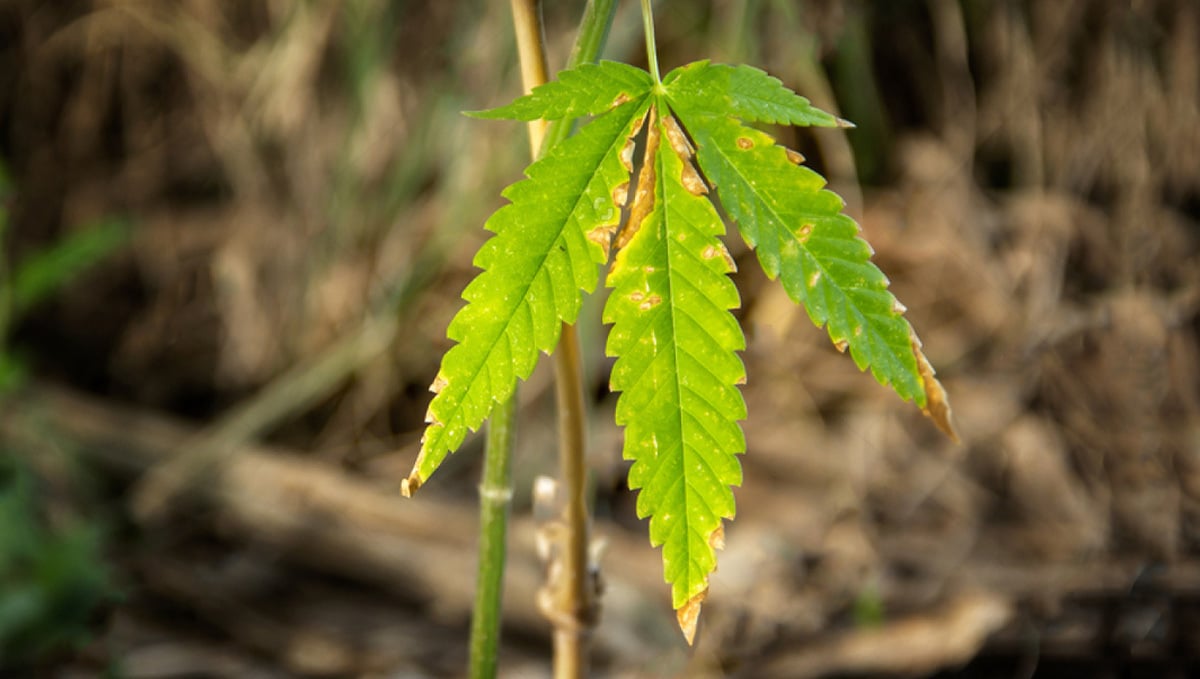
You should be really careful when mixing the nutrient solution that you're giving your plants, because plants don’t have a way to deal with an excess of nutrients, they will start to show signs of “nute burn” like:
- Bending of the tips
- Yellowing or browning of the leaves
- Leaves with crispy tips
- Leaves twisting
Nutrient burn during the vegetative stage
In can be easier to deal with nute burn in the vegetative stage because there are no buds to be affected, so you will only suffer from a couple of burnt leaves if you can control it in the early stages.
Even though it's easier to deal with because you're not risking your buds, have in mind that depending on the amount of nutrients you've given to your plant, all the leaves can ultimately burn and it can be really hard for your plant to recover.
Nutrient burn during flowering
Buds can also be affected by nutrient burn, when changing from vegetative to flowering nutrients, cannabis needs a higher amount of Calcium and Magnesium to produce flowers properly.
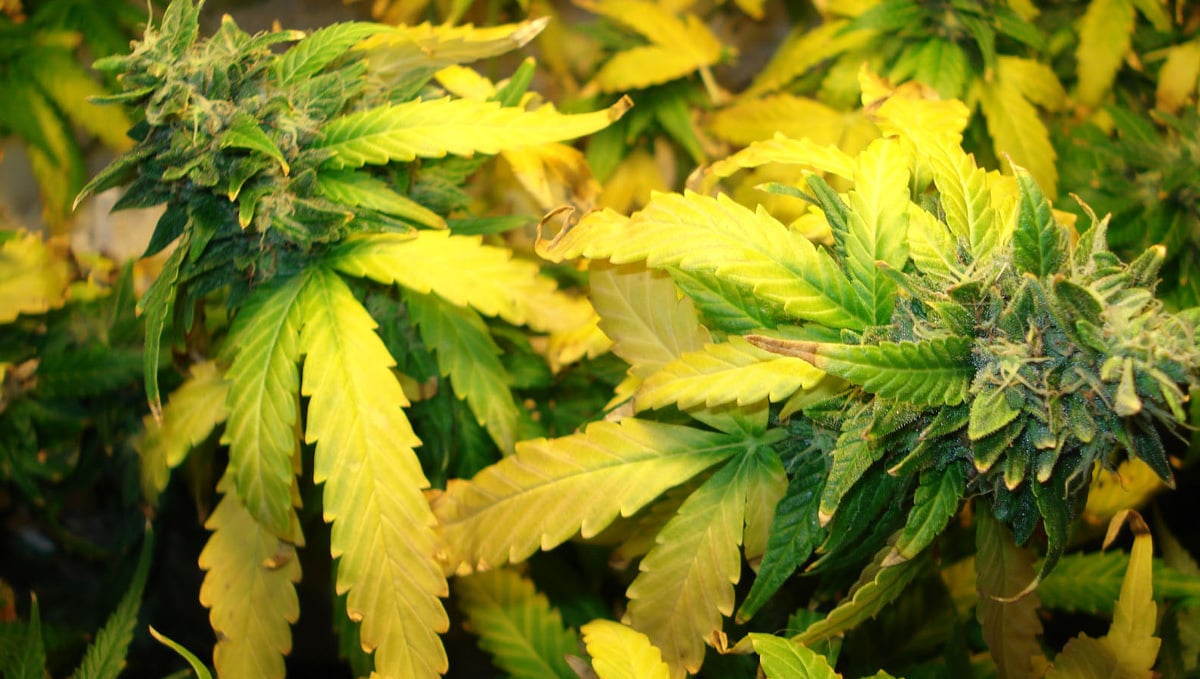
Depending on the medium, you will have to provide those micronutrients, and can be easy to burn your plants if given in excess, remember nutrient burn can be caused by macro and micronutrients even if they are used in lower quantities. If you overfeed during the flowering stage, the symptoms will be the same but it can be riskier because if the buds brown, they can die and start rotting, ruining your harvest.
| Early symptoms | Advanced symptoms |
|---|---|
| Slow plant growth cause by nutrient lock | Brown spots on leaves |
| Leaves curl downwards | Burnt tips of leaves |
| Leaves edges burnt | Lower leaves damaged (macronutrient excess) or Top leaves damaged (micronutrients) |
| Yellowing on the tip of leaves | Leaves dying and falling |
Nutrient burn vs nutrient deficiency
When identifying symptoms it’s crucial you don’t get confused because the symptoms of overfeeding are similar to what plants show with other problems like plant heat stress symptoms or light stress, potassium deficiency, nitrogen deficiency (or other nutrient deficiencies) or pH oscillation.

Nitrogen and potassium deficiency can be easily mistaken for nutrient burn but they happen if there's a lack of nutrients and not an excess, while the symptoms of nitrogen deficiency are the yellowing of the leaves, starting by the tips, the symptoms of a potassium deficiency are yellow and brown spots in the leaves.
Because they're very similar to nutrient burn, it's essential to control the amount of nutrients in your watering solution so if this happens, you know exactly how to deal with it.
4. How to fix nutrient burn
If your plant is showing signs of nutrient burn, first make sure it indeed is an excess of nutrients and if it is, you can easily fix it by following 4 simple steps:
Cut off the affected foliage
If the leaves have already started to brown and die, it’s essential you remove them.
Dying leaves can ultimately rot and this will cause even more problems, like mold and even bud rot, depending on where those leaves are.
Washing the roots and medium
Just like when flushing before harvest, when your plant suffers from overfeeding it is essential you remove the excess nutrients in the medium and in the roots.
To do this, you need to flush with pH water (5.8-6.3 for soil) 2 times a day, ideally, you would water until you see run-off coming from under the pot and repeat it after 15-30min.
If you want to make sure you're doing it properly, you can measure the PPM of the run-off, this way you'll know when you have washed off the nutrient excess.
Adjust the nutrient solution
Usually the manufacturers provide a feeding amount and schedule but it can vary according to the medium and strain you’re growing, to keep things safe it is recommended to use a TDS meter but if you want to keep simple you should always start with a smaller dose than what your nutrient solution advises and increase little by little.
Help the roots recover
To help the roots recover you can use root stimulators which contain vitamins, hormones and microbes that will make the roots develop stronger and faster, by adjusting the nutrient solution and helping the roots recover you’ll see your plant coming back to normal in no time.
5. How to prevent overfeeding
When preparing the nutrient solution to water our plants we need to make sure we are giving the right amount of nutrients, if you don’t have an TDS meter, here’s a guide to help you avoid problems without having to buy expensive tools.
| Stages | Nutrients |
|---|---|
| Seedling | Water |
| First half of the Vegetative stage | ½ dose of Veg. Nutrients |
| Second half of the Vegetative stage | 1 dose of Veg. Nutrients |
| Pre-flowering stage | ½ dose Veg. Nutes + ½ dose Flowering Nutes |
| First half of the Flowering stage | ½ dose Flowering Nutes |
| Second half of Flowering Stage | 1 dose of Flowering Nutrients |
| Ripening and Harvest | Flushing (water) |
Because all plants are different, even plants of the same strain, you should always start with ½ or even ⅓ of the recommended amount, after you see your plants are okay and don’t show stress symptoms, you can slowly start increasing the amount of nutrients.
What should beginners keep in mind to avoid overfeeding?
For more experienced growers, overfeeding shouldn’t be a problem and, but if it’s your first time it can be hard to know what to do so here are a couple of things you should have in mind to prevent overfeeding.
Growing conditions
Every strain is different and may thrive in slightly different conditions so it’s recommended you know what the specific strain needs because the growing conditions affect your plant’s basic processes such as transpiration and photosynthesis.

If you can’t adjust the growing conditions, make sure the temperature and humidity are in the acceptable range.
Nutrients
You can find organic and mineral nutrients in most grow shops, organic nutrients are derived from natural sources and are usually released slowly because they stay in the substrate, allowing the plant to absorb what it needs.
Mineral nutrients are fed directly to the roots and can be easier to overfeed so make sure you make a wise choice when buying your fertilizer.
pH levels
If the pH is too high or low, your plant will struggle to absorb nutrients, make sure you check and adjust the pH of the nutrient solution. If you don’t have the tools, you can ask for a lab test from your water company, this will allow you to better control what your plants eat, thus avoiding problems.
6. Overfeeding Cannabis Crops - FAQs
Overfeeding is one of the most common issues that new growers run into. Like most things in life, cannabis cultivation takes a certain level of know-how in order to be successful. You can read all the blogs you like, and you can learn a bunch from these pieces, but to really get a proper understanding you're gonna have to dive in head first, make mistakes, and learn from them. Overfeeding your crop isn't ideal, but it also isn't the end of the world. It is almost always fixable, so don't freak out. Let's quickly answer some of the most common questions about overfeeding cannabis crops:
What is Overfeeding?
Overfeeding occurs when a grower provides more nutrients to the plant than it can effectively handle. This can lead to nutrient buildup in the medium, which will block proper absorption by the roots and stunt growth.
Is overfeeding a bigger issue with certain growing mediums?
Yes and no. There are 3 main growing mediums used for cannabis cultivation - soil, coco-coir, and hydroponics. To understand how overfeeding works, you need to understand how the plants access nutrients with each growth medium. Soil cultivation works differently from coco and hydro. With soil, the beneficial microbes in the soil break down organic matter and help convert them into nutrients the plant can access.
If too many nutrients are added to the soil, these microbes will be overwhelmed and unable to break down any more nutrients. This makes overfeeding a less common issue because the microbes have control over the level of nutrients in the substrate. As long as you are not using any additional boosters or additives, then overfeeding issues rarely pop up. That's not to say they can't occur at all, just that they happen with less regularity than with coco and hydro...but why?
Coco and hydro cultivation is different because the plant accesses these nutrients directly from the medium, so overfeeding is usually a bigger problem with these mediums as it’s easy to add too many nutrients. This is where experience comes in. The most common mistake for beginner growers is thinking that more nutes equals better plant development. This actually couldn't be further from the truth. Sure, your plants need nutes to survive and thrive, but there is a balance that needs to be struck.
If you are growing with coco or hydro, then you need to buy an EC or TDS meter, to measure the electrical conductivity (the number of nutes) of your feed water. This will tell you what level of nutrients are actually in the mix. It's no good just guessing it here - this has been the downfall of many a new grower.
You're going to need a pH pen also. You might be overspending money on your setup, but these two meters are totally indispensable - and they should set you back more than about $100 for both. So, while it's easier to flush coco and hydro than soil, it's also much more common to run into overfeeding issues. As long as you get on top of it early and flush your crop super well, you should be totally fine.
What is the worst thing that could happen if I overfeed my plants?
The most common symptom of overfeeding is growth stalling or stopping. You might also notice yellowing leaves, which could be caused by a nutrient burn or deficiencies such as nitrogen, phosphorus, and potassium. Overwatering can also lead to fungi, root rot, and other issues like pests and diseases. All of these things can be fixed as long as you catch them early, but the best thing to do is avoid overfeeding in the first place. The best way to do this is by starting with a good nutrient plan and sticking to it. Don't add too many nutes at once, and make sure to only use between a quarter and a half of the recommended dosage, especially in the first few weeks.
This is even more important for autoflowering plants, as they have a lower need for nutes when compared to photoperiods. But the worst possible outcome from overwater? Simple, your crop could die from this issue. Many new growers has lost a crop to overfeeding issues while thinking they are doing all the right things. Just remember, patience is key here - if you stick to a good plan and don't rush things, you should have no problems.
What are the best nutrients on the market for cannabis cultivation?
In this brave new world of cannabis legality, the market is absolutely stacked with nutrient options. Honestly, most of them are great. If you stick to the big names you really can't go wrong. We have had amazing success with CANNA, House and Garden, Cyco, and Advanced Nutrients. These brands have been around for years and they have truly mastered the art of cannabis cultivation. They offer a range of products designed to meet different types of growers' needs, from beginner to expert level. Plus, most of them have great support services, so you can always get the help and advice you need.
At the end of the day, it's all about finding what works best for your environment and grow style. Start with a good nutrient plan and use high-quality nutes from reputable brands - then adjust as needed.
7. In conclusion
Nutrient burn can be scary if you’re new to cannabis, but luckily, it is quite easy to fix. We recommend using organic nutrients for cannabis because it’s harder to burn your plants with them, but if you cannot find them where you live, make sure you take a look at our chart to avoid nutrient burn.
If you’re experiencing nutrient burn or still have doubts about it, feel free to leave us a comment below!








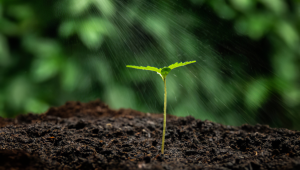
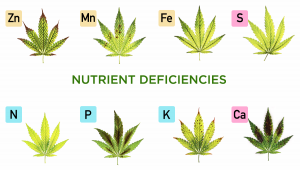
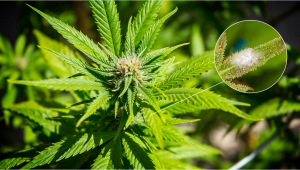
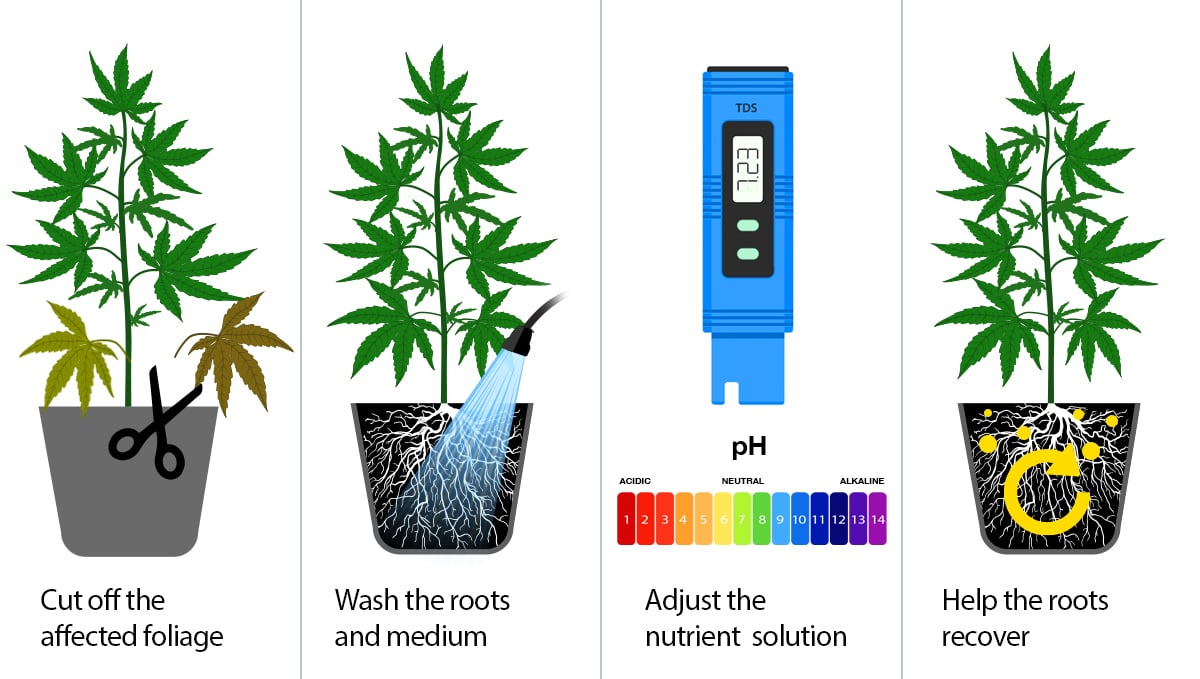

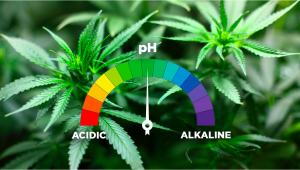
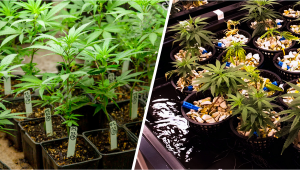

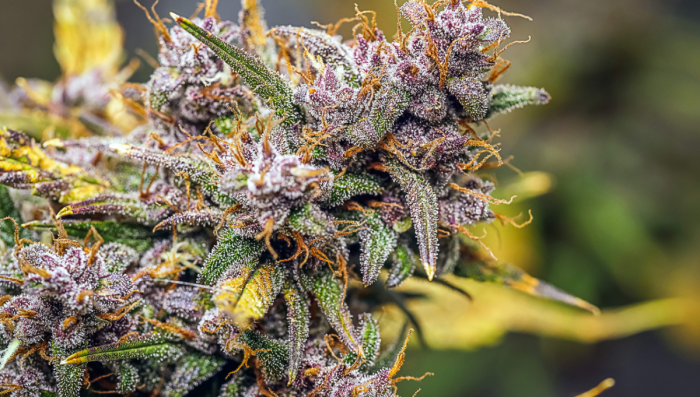
Comments